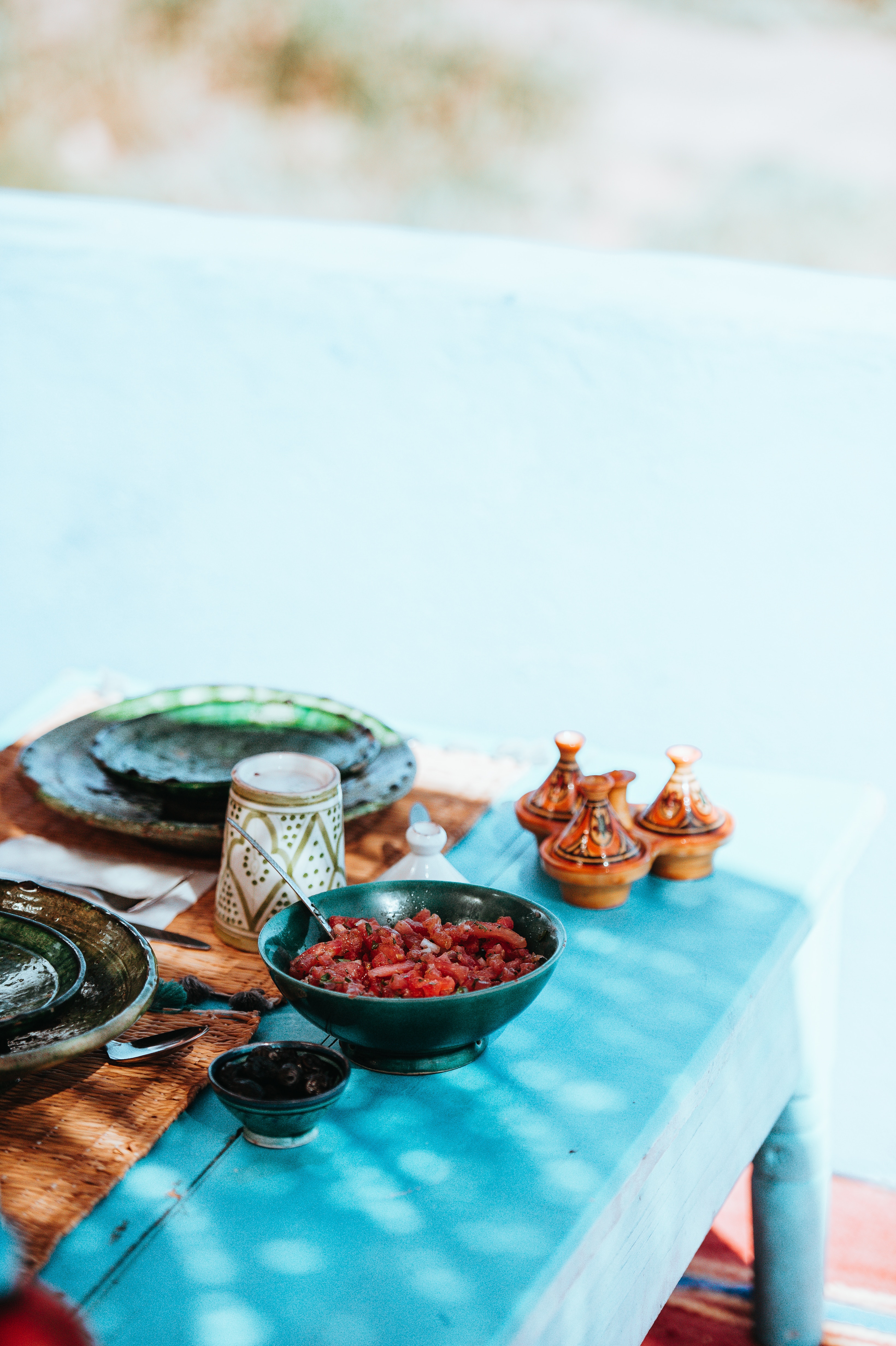Description
The traditional tajine pottery, sometimes painted or glazed, consists of two parts: a circular base unit that is flat with low sides and a large cone- or dome-shaped cover that sits on the base during cooking. The cover is designed to return all condensation to the bottom. That process can be improved by adding cold water into the specially designed well at the top of the lid.
Tajine is traditionally cooked over hot charcoal leaving an adequate space between the coals and the tajine pot to avoid having the temperature rise too quickly. Large bricks of charcoal are used, specifically for their ability to stay hot for hours. Other methods are to use a tajine in a slow oven or on a gas or electric stove top, on the lowest heat necessary to keep the stew simmering gently. A diffuser, a circular utensil placed between the tajine and the flame, is used to evenly distribute the stove’s heat. European manufacturers have created tajines with heavy cast-iron bottoms that can be heated on a cooking stove to a high temperature, which permits the browning of meat and vegetables before cooking.

Reviews
There are no reviews yet.